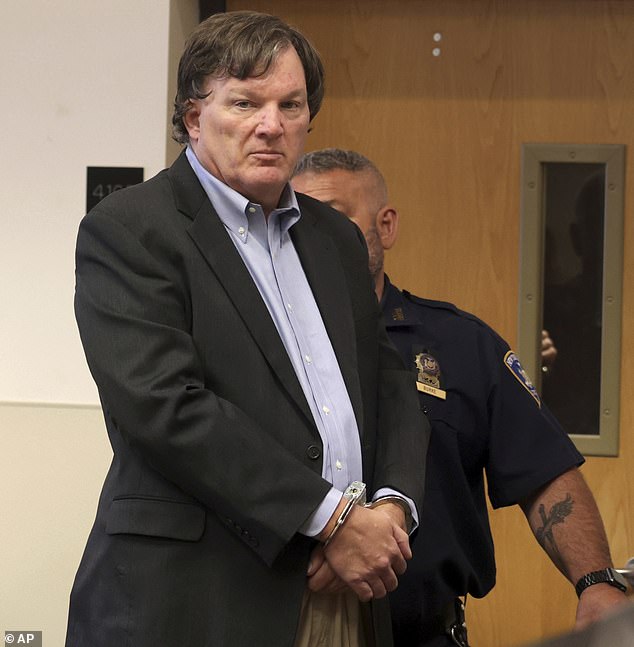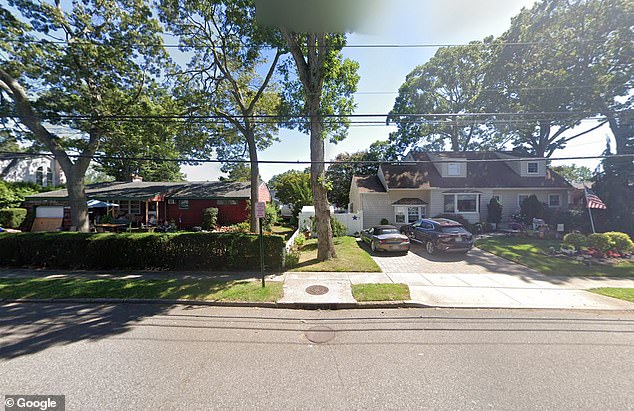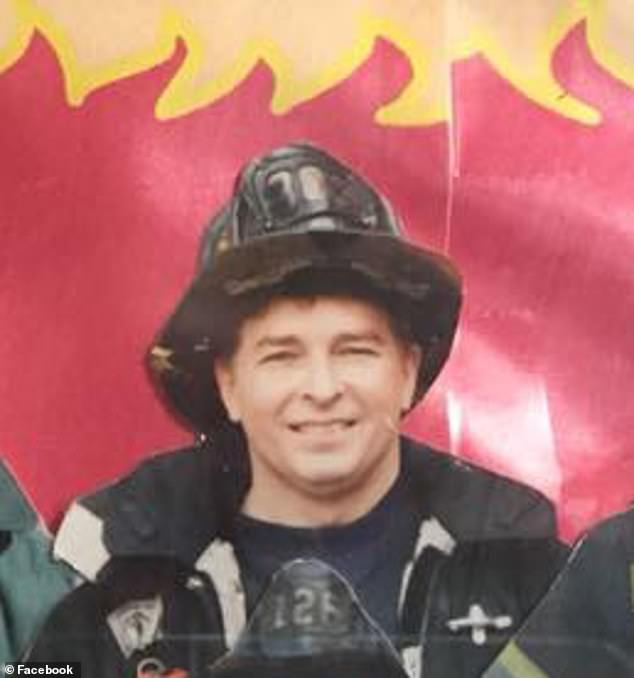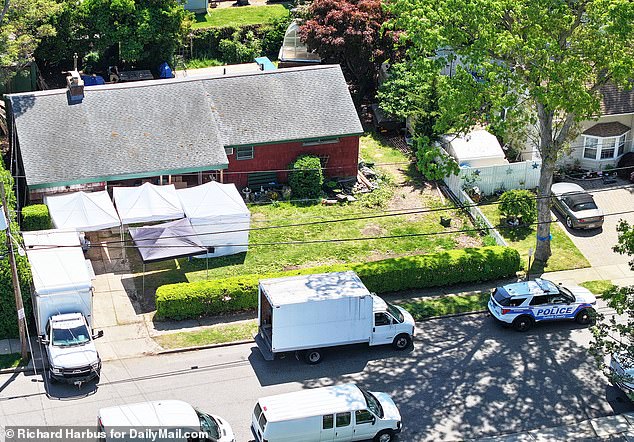I thought my neighbor was ‘creepy’ for 30 years – it turns out he is the Gilgo Beach serial killer suspect
A former New York City firefighter has revealed that he lived next door to the prime suspect in the Gilgo Beach serial killings for nearly three decades.
Etienne de Villiers, 69, and his wife Patricia, 66, lived next door to alleged killer Rex Heuermann, who is accused of murdering six women who disappeared between 1993 and 2010.
De Villiers, known at his firehouse as “Frenchy,” had considered his neighbor “creepy” but harmless since he moved with his wife Patricia into their First Avenue home in the town of 17,000 in 1995.
Heuermann and de Villiers had lived next door to each other in the Long Island town of Massapequa Park since 1995.
De Villiers was initially stunned when he heard of his neighbour’s alleged crimes, but soon recalled incidents involving Heuermann that had made him uneasy.
Etienne de Villiers, 69, lived next door to Rex Heuermann, an architect who has pleaded not guilty to five murders and is considered a suspect in a sixth case.

Rex Heuermann and de Villiers had lived next door to each other in the Long Island town of Massapequa Park since 1995
He described Heuermann as a man of imposing stature who would try to make awkward small talk with his wife, especially when De Villiers was away from home for work.
“Every time she was there and I was working at the fire station, Rex would hang over the fence and talk to her,” de Villiers said. The Daily Beast.
But Patricia eventually told her husband that Heuermann’s behavior made her nervous.
There was a time when he would peer over the fence and stare at her as they sunbathed, trying to make conversation. That was when the couple had just moved into the neighborhood.
“He kept saying — he was 6-foot-3 and 250 pounds — and he would try to strike up a conversation with her,” De Villiers explained to Fox News.
De Villiers eventually confronted Heuermann and asked him to stop. Perhaps surprisingly, Heuermann complied without resistance.
“I literally threatened the man,” de Villiers said. “I thought if I have to fight the man, I have to fight the man. I don’t care how big he is. I said to him, ‘Don’t make me…’ I said STOP!
“It was unpleasant, he obeyed. He stopped, he didn’t argue with me,” de Villiers said.
“He said, ‘I’m not doing it anymore,’ and he backed out right away. So I said, ‘Okay.’
“When I had that altercation with him, I basically threatened him to stop looking at my wife. He backed away. I didn’t see the violence coming because he didn’t seem aggressive. I mean, he looked strange, huge,” de Villiers recalled.
“But he never got any more aggressive toward me or anyone else, as far as I could tell,” he said. “It’s scary now, when you think about it, the girls all look like my wife.”

Etienne de Villiers, 69, lived with his wife Patricia, 66, next door to Heuermann

On the right is the home of former FDNY firefighter Etienne de Villiers and his wife Patricia, while on the left is that of Gilgo Beach serial killer suspect Rex Heuermann.

The 1.93-meter Heuermann often looked over the fence and tried to chat as Patricia sunbathed while De Villiers was on duty at the fire station.
Over the years, their interactions remained brief but friendly, although they were limited to short conversations as De Villiers walked to his car parked in the driveway.
“We didn’t have a beer together or play cards or anything. But when I came to get my car, we would say, ‘How are you?'” de Villiers recalled. “That’s pretty much how it went, and that’s how it stayed for the next 30 years.”
Heuermann often spoke of his height, his 250-pound weight, his gun collection and his love of hunting. He even said he had a security door to “protect his weapons,” a fact that surprised De Villiers, given the dilapidated state of his home.
“The man was strange and weird, but never violent,” de Villiers said. “We spoke almost every day. He was always kind and respectful. I was surprised by the violence. I really feel sorry for the children.
Despite growing up there and living there for many years, Heuermann had let his house fall into disrepair – even though he was an architect. De Villiers compared him to a shoemaker with holes in his shoes.
It appears the relationship between De Villiers and Heuermann was unique in the area, as many others shunned him.
“The neighbour on the other side of him had put up big trees so you couldn’t see his house at all, so he had no contact with the guy at all,” de Villiers said. “So it’s sad to say I was the only one who spoke to the guy.”
Others in the neighborhood thought the suspected serial killer was a quiet family man, often seen tinkering in his garage but also secluding himself.

This realization has made De Villiers think about the contrast between his life’s work as a firefighter and Heuermann’s alleged crimes.
De Villiers also noticed that Heuermann’s friends looked unkempt, unlike typical Massapequa residents.
“They seemed like a pretty low-key type of guy. You could pick them up and put them in a trailer park,” de Villiers told The Daily Beast.
Heuermann was married to Asa Ellerup. Together they had a daughter, Victoria, and Ellerup’s son, Christopher Sheridan, also lived with them.
Christopher, who has a developmental disability, seemed very withdrawn as he got older and had no friends, de Villiers said.
De Villiers, who worked at Ground Zero after 9/11, only recently became aware of Heuermann’s so-called “post-event” to-do list, in which he outlined methods to prevent bodies from being found and identified.
The document, which was found on one of Heuermann’s computers, described gruesome steps such as “removing identifying marks” and “removing the head and hands.”
It was 2010 when Suffolk County police officer John Mallia discovered the remains of Melissa Barthelemy, one of the Gilgo Four, while searching for a missing sex worker.
The discovery led to the tracking of more victims and the identification of a new serial killer on Long Island.
Initially, investigators suspected that it was a high-ranking police officer, but DNA testing pointed to Heuermann.
Heuermann was initially charged with the murders of three women: Megan Waterman, Melissa Barthelemy and Amber Costello. The victims had disappeared between 2007 and 2010.
In January, he was also charged with the murder of a fourth victim: Maureen Brainard-Barnes.

Etienne Devilliers, Rex Heuermann’s neighbor, shows where Heuermann used to look over the backyard fence at his wife sunbathing in their Massapequa Park, New York, home

Despite being an architect, Heuermann allowed his house to fall into disrepair over the course of 30 years

Last month, Heuermann was charged with the murders of two more women, including Sandra Costilla, killed in 1993, and Jessica Taylor, whose torso was found in 2003.
De Villiers recalls officers showing up at his door early one morning in July 2021, asking him to move his cars.
He complied, and when he saw the news, he discovered that Heuermann was the suspect for the Gilgo killer. He was stunned, given their years of neighborly interactions.
De Villiers shared a conversation in which Heuermann’s son Christopher expressed his disbelief at his father’s guilt.
The neighbor reassured him, emphasizing the principle of innocence until proven guilty. He also felt sorry for Heuermann’s wife Victoria.
In May of this year, as in July last year, helicopters again flew over the city and police cars again closed off the suburb.
A second investigation yielded even more evidence and led to Heuermann being charged with the additional murders.
The indictment details his meticulous planning and brutal methods.
It has left De Villiers thinking about the contrast between his life’s work as a firefighter and Heuermann’s alleged crimes in destroying families.
